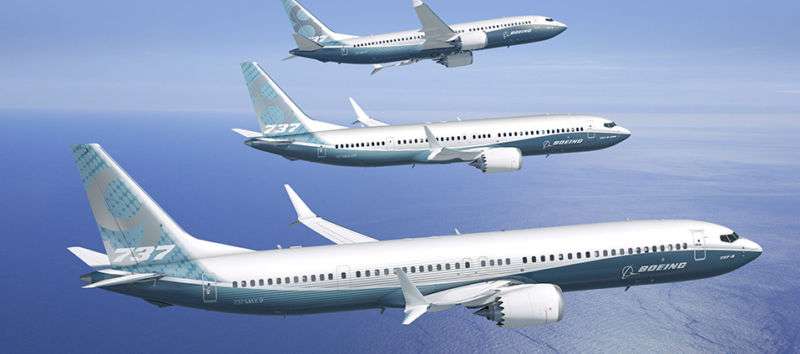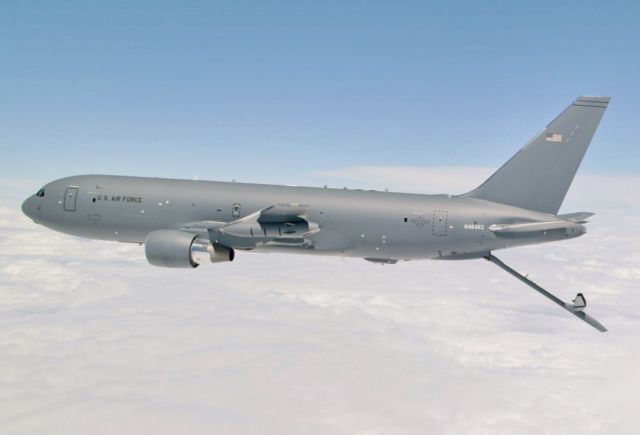
737 Max fix slips to summer—and that’s just one of Boeing’s problems

The past 10 months have not been good for Boeing for all sorts of reasons—capped off by the failure of the company’s Starliner commercial crew vehicle to achieve the right orbit in its uncrewed premier in December. But the biggest of the company’s problems remains the 737 Max, grounded since last spring after two crashes that killed 346 people between them. Combined, the crashes are the worst air disaster since September 11, 2001.
Both were at least partially caused by a sensor failure with no redundancy and a problem with MCAS (the new software controlling the handling of the aircraft) that the air crews had not been trained to overcome.
Boeing executives are now telling the company’s 737 Max customers that the software fix required to make the airliner airworthy will not be approved in the near future, and that it will likely be June or July before the Federal Aviation Administration certifies the aircraft for flight again—meaning that the aircraft will have been grounded for at least 16 months.
The FAA, for its part, has not committed to any timeframe for re-certifying the aircraft. In an emailed statement, an FAA spokesperson said, “We continue to work with other safety regulators to review Boeing’s work as the company conducts the required safety assessments and addresses all issues that arise during testing.”
In the past, Boeing could rely on its space and defense divisions to keep the company rallying when its commercial airliner business faltered, and vice versa. But over the past decade, Boeing’s defense, space, and security businesses—consolidated into a single division in 2017—have not been booming. And growth in overall revenues came largely because of the sales of the 737 Max.
Boeing, once known for a culture of safety and rigorous engineering, has over the past decade gained a reputation for sloppy work, blown deadlines, and flat-out scandal.
Space cases
The CST-100 Starliner commercial crew spacecraft was supposed to be a slam dunk for Boeing—a contest that, with the company’s reputation in space systems (as a partner in United Launch Alliance, and one of the major contributors in building and sustaining the International Space Station), would have seemed to have been its to lose.
Boeing has been doing just that. The program suffered a series of setbacks, including a problem with a pad test of its abort system. In November, NASA’s inspector general reported that the Starliner would cost 60 percent more per seat than SpaceX’s Crew Dragon. The Crew Dragon completed a successful unmanned demo in March of last year. And despite an explosive failure on the launch pad last April, SpaceX managed to come back and complete its last unmanned test this month.
The failure to reach the ISS’s orbit with the Demo 1 launch of the Starliner was a very expensive software failure. And while the rest of the flight was proclaimed to be successful—including a soft landing on land at White Sands Space Harbor in New Mexico—there were other problems related to the failure of thrusters on the service module connected to the way they were used to try to raise Starliner’s orbit. Those thruster issues may have caused the spacecraft to fail other tests.
Meanwhile, Boeing’s piece of the Space Launch System has had a long road toward delivery, with its first core stage just completed. The delays have further pushed back all of the programs linked to it, including NASA’s current lunar plans, and the rocket is unlikely to see its first flight until 2021.
Sure, most of the spending on the program—72 percent—has been on overhead costs. So not all of the cost overruns are Boeing’s fault. But Boeing’s costs in the cost-plus program have been growing unexpectedly. All that apparently doesn’t matter to NASA, which is going ahead and buying the rockets—offering up $270 million on top of the cost-plus contract to deliver 10 of them.
Tanking it
Boeing’s KC-46 Pegasus tanker program has the shadow of scandal hanging over it. Why? Because it forced Boeing’s CEO-before-last to resign, and it put the company’s chief financial officer (and former Air Force procurement officer) in jail. But because the competition was a Northrop partnership with Airbus, Boeing still managed, somehow, to swing enough political clout to get the contract anyway. And the company has run into delays and difficulties ever since.
The program is $3 billion over budget and three years behind schedule. Debris left behind from manufacturing the airframes has slowed down delivery of the planes. There are problems with the system used to steer the refueling boom, and it looks like the aircraft won’t be able to use wing-mounted refueling pods until at least the middle of this year—limiting the tanker’s aerial refueling role. And that is its main job.
Boeing took a $272 million hit on the program because the company had to redesign the tanker’s wiring. Then there were “technical and supply chain” problems that further delayed the program in 2016.
While the Air Force has begun taking delivery on the tankers, the aircraft entered initial operational capability testing two years behind schedule. And last year, the aircraft was banned from carrying passengers or cargo—a big part of its mission—after cargo broke free of lockdowns during flight.
To top it off, delivery is behind schedule, and the Air Force doesn’t expect to reach its full operational capability with the aircraft until 2022, maybe. As of the end of the 2019 fiscal year, the Air Force had seen delivery of 18 aircraft to air bases, with one more completed and awaiting delivery—making the total quantity one greater than what Boeing was supposed to deliver in 2017 under the contract.
A new legacy
Boeing has a bunch of other military programs in play. But with the F/A-18 Super Hornet now entering a legacy phase with the Navy, Marine Corps, and fewer buyers overseas, and with Boeing taking a backseat in a partnership with Lockheed’s Sikorsky for Army helicopter competitions, the company’s military footprint could be shrinking fast. A lot is riding, literally, on Boeing’s space operations going forward.
But given the problems Boeing’s programs have faced over the past few years, capped off by the 737 Max MCAS disaster, we shouldn’t wonder that Congress is taking an interest in getting more oversight over the company. And the future of all Boeing’s businesses is riding on the company regaining trust.






